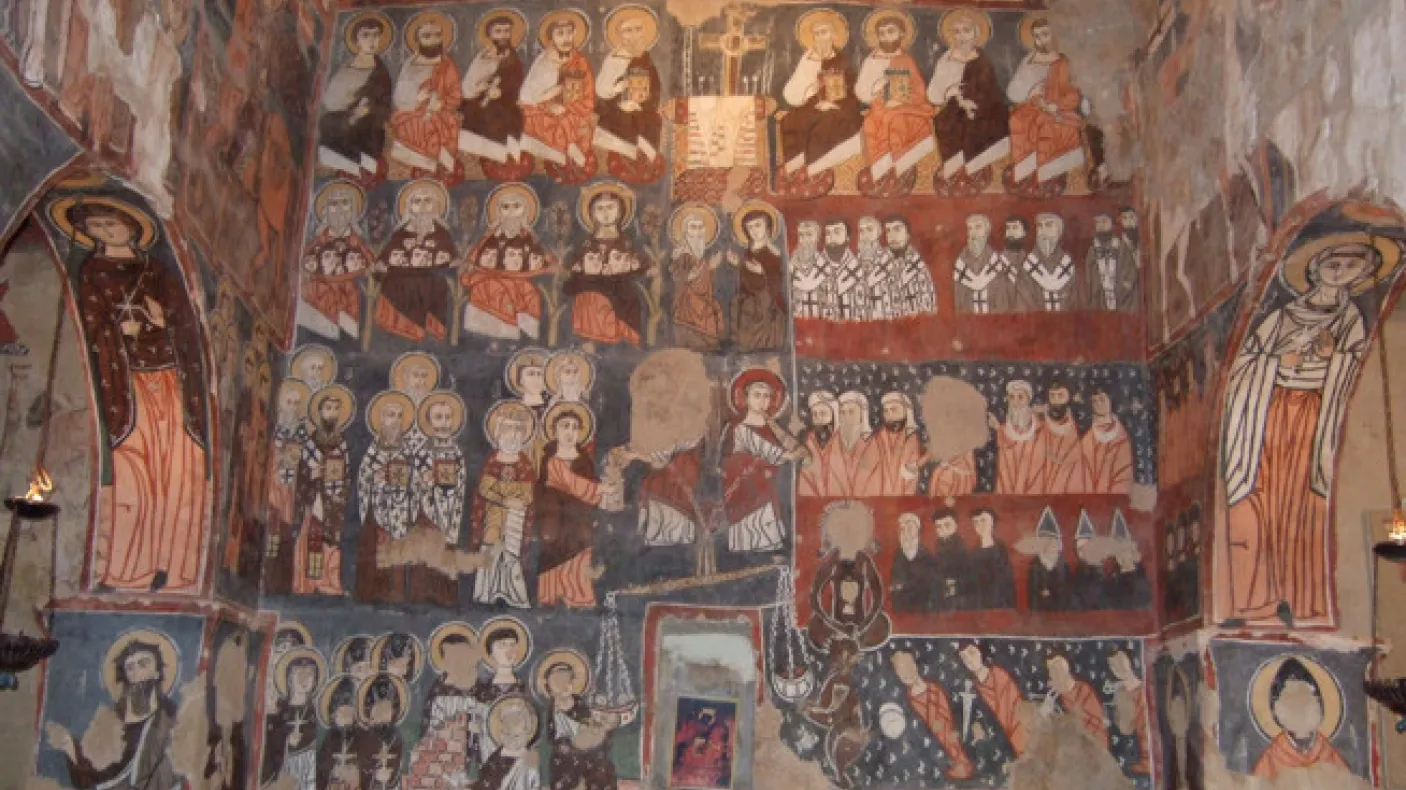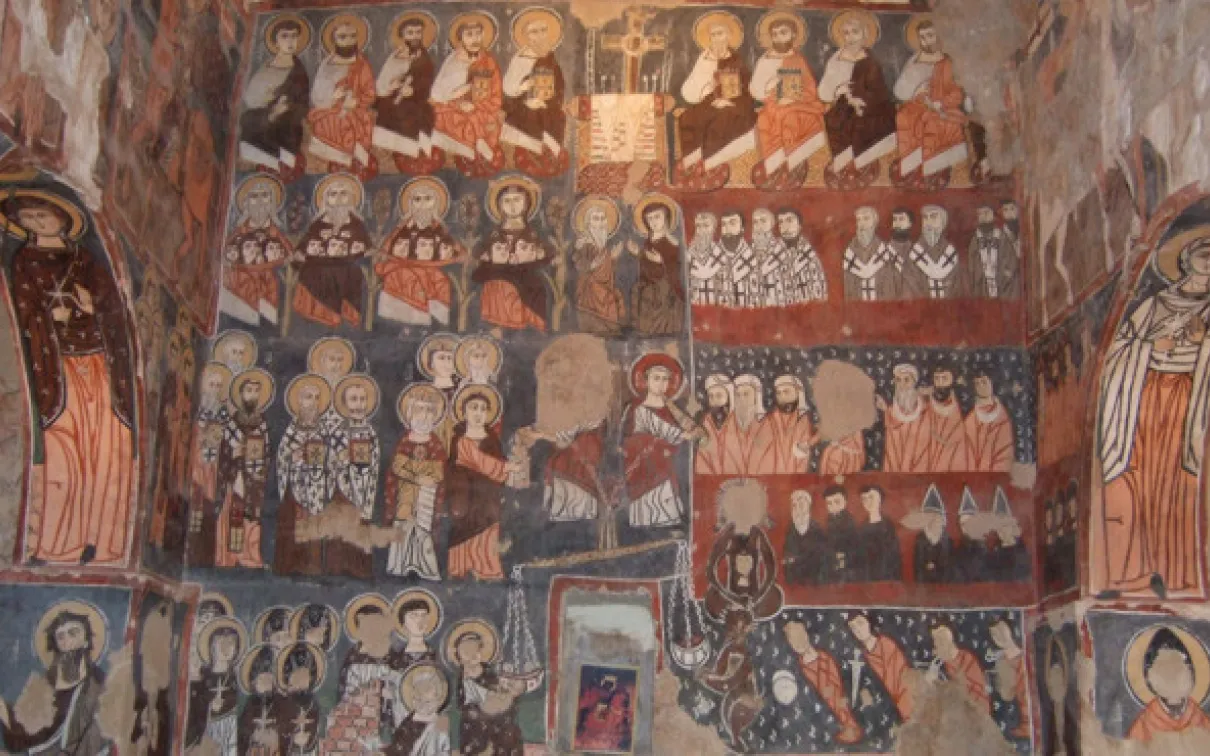The Monastery of St Moses, Syria: The Frescoes
Published
Categories
Author
Blog Post
A report on Deir Mar Musa would not be complete without an account of the frescoes. Others have done most of the work studying these paintings, but my architectural study of the monastery buildings has certainly provided important informaton about the rationale for the last phase of frescoes (for which see a future blog). The frescoes are actually the foundation of the recent history of the site, as an early paper on the frescoes by Canadian scholar Erica Dodd brought Fr. Paolo Dall’Oglio to the site and led to the restoration of the buildings and restablishment of the community. Dodd published a book on the frescoes in 2001. The restoration of the frescoes by an Italian team from the Istituto del Restauro, Rome, brought in by Fr. Paolo created new information, some of which did not get into Erica Dodd's book, so this account will draw on these an other sources.
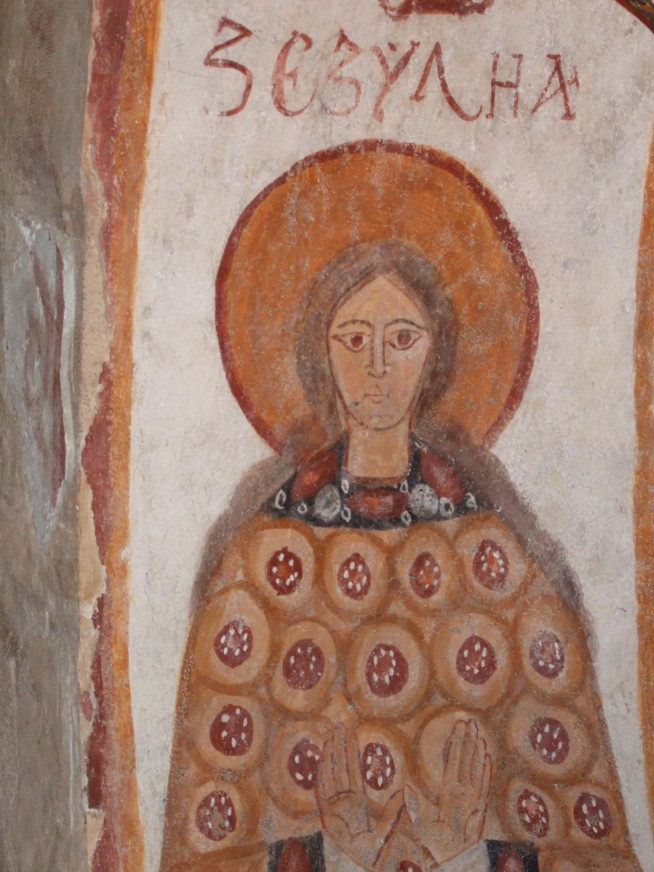
This painting of St. Cecilia is from the first phase of the frescoes, dated to after 1058 and before 1088.
The paintings in the chapel at Mar Musa may be called mural paintings, all paintings on a wall are mural paintings. There are two main types of mural painting. The dry or "secco" technique involves painting onto dry plaster. The fresh or "fresco" technique requires applying fresh plaster, and then quickly painting on the plaster when it is still wet, so that the paint becomes a part of the plaster itself to create a more durable bond. These paintings at Deir Mar Musa are technically frescoes.
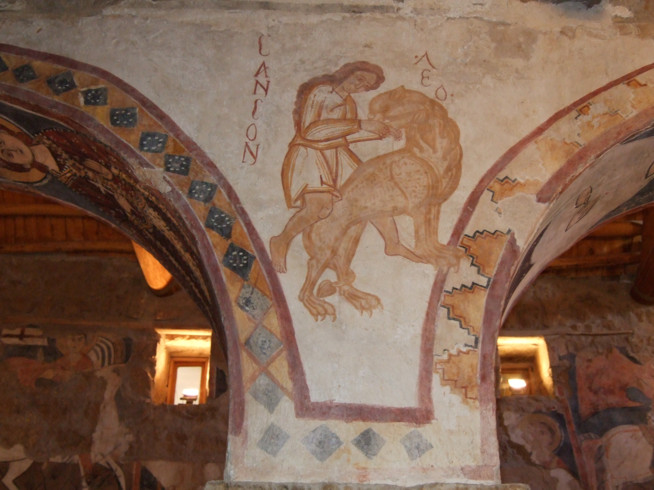
This painting of Samson and the Lion is from the first phase of the frescoes, dated to after 1058 and before 1088.
There are three major phases of fresco. The earliest seems to be sealing an inscription in the wall equal to 1058, while an inscription painted onto the first layer of frescoes commemorates a death in 1088, so the first phase dates to between 1058 and 1088. A further phase, which comprises the painting of St. Simeon Stylites and the Baptism of Christ, is dated by an inscription dated to 1095. Two other layers were identified by the Istituto del Restauro conservators, between the first and last phase, but these are so fragmentary they make no contribution to the history or iconography of the frescoes.
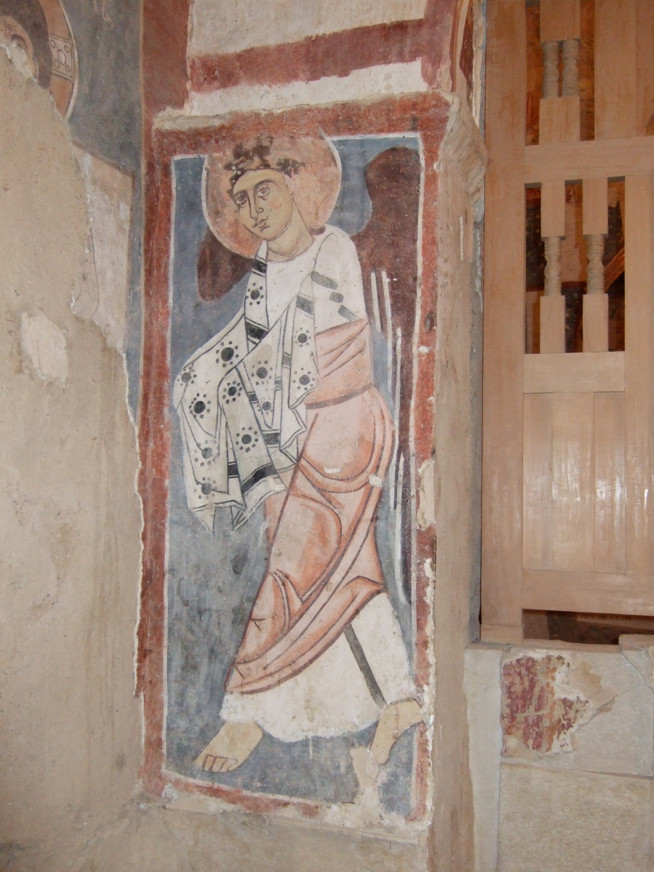
From the second phase, dated to 1095 , this angel carries a towel for the Baptism of Christ, whch is mostly lost.
The final phase of frescoes also has a date inscribed to commemorate its completion, although with some disagreement as to the precise date depending on whether it is actually written in the Seleucid calendar or the Muslim calendar, with Fr. Paolo reading 1208, and Erica Dodd reading 1195. Given the closeness in these dates either is acceptable for archaeological purposes!
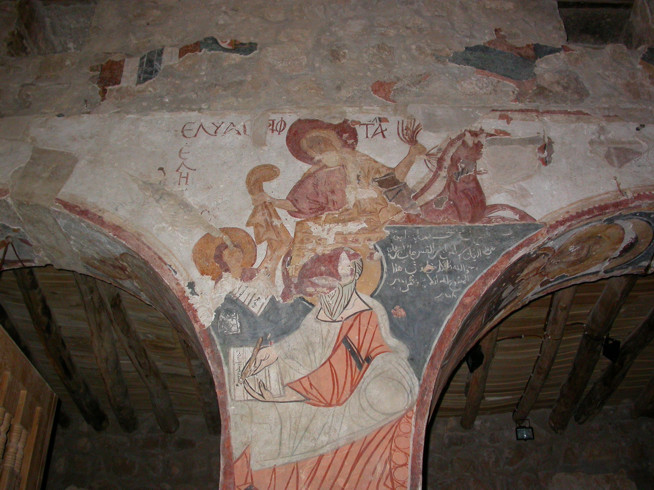
Fresco of first phase with the Ascension of Elijah (red pigments, white ground), and the final phase (blue ground) with the Evangelist Mathew and inscription of 1208.
The last phase is the most complete, although in most cases traces of the first phase show the last phase mostly follows the same pattern. The frescoes show influences from Byzantine, Syriac, and also western traditions introduced into the Middle East by the Crusaders (although Mar Musa was never a part of the Crusader territories). For example the great domed churches of Byzantium will have Christ Pantocrator in the dome, supported by the Four Evangelists (writers of the recognized Gospels), in turn supported by columns that carry images of the saints. All of these are found at Deir Mar Musa, although the shape of the building requires rearranging the location.
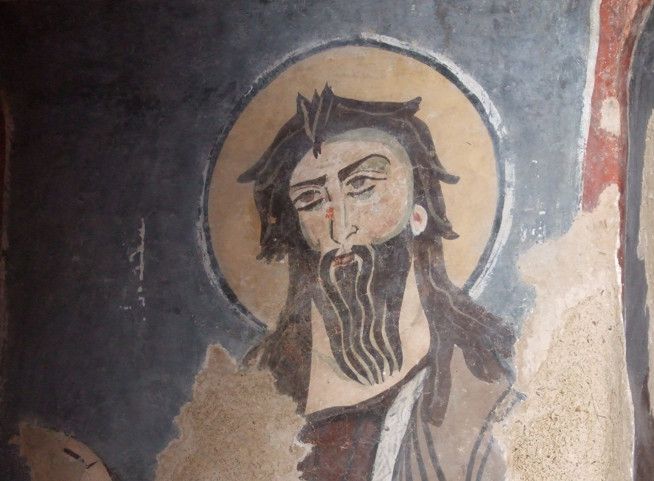
From the 1208 phase this painting of John the Baptist shows the bedraggled hair of a desert prophet.
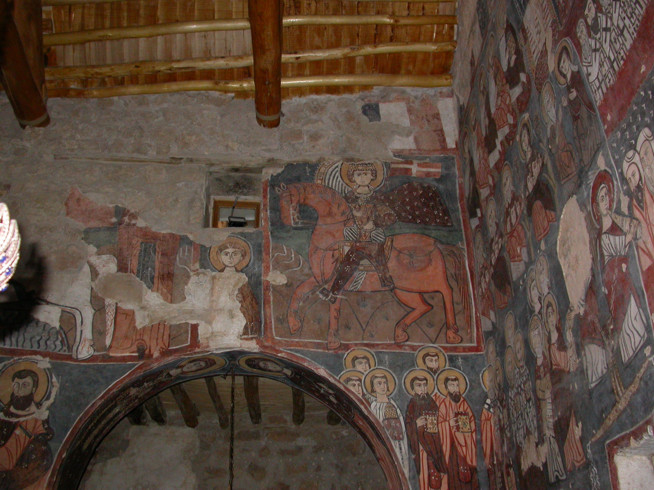
The clerestory of the South and North walls carry Equestrian Saints, warriors that had a life of fighting and hunting and then found God. The best preserved is this particular saint on the South wall, St. Bacchus, the important Syrian equestrian saint. This is a typical composition, reproduced for centuries afterwards in other representations of equestrian saints, such as icons.
The paintings of Equestrian Saints are very Syrian in their origins, and are found in the first and last phases. There are six, three on the north wall of the nave, three on the south. They are in pairs, with St. Sergios and St. Bacchus at the western end, St. George and St. Theodoros in the middle, and St. Demetrios and St. Christopher at the eastern end. In this case there is clear evidence of influence from east to west, as equestrian saints, especially St George, became very popular in the west. Also very Syrian is the depiction of female saints in the soffits (under the arches), found in the first phase and the last. Even the saints depicted, St. Barbara, St. Anastasia, St. Juliana, St. Elizabeth, and St. Catherine, were especially popular in Greater Syria.
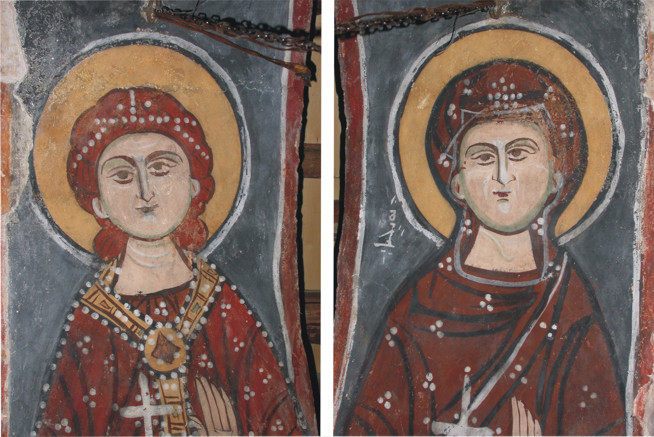
Amongst the many female saints depicted on the walls are St. Barbara, left, the Patron Saint of Masons; and St. Julia, right, both from the 1208 phase.
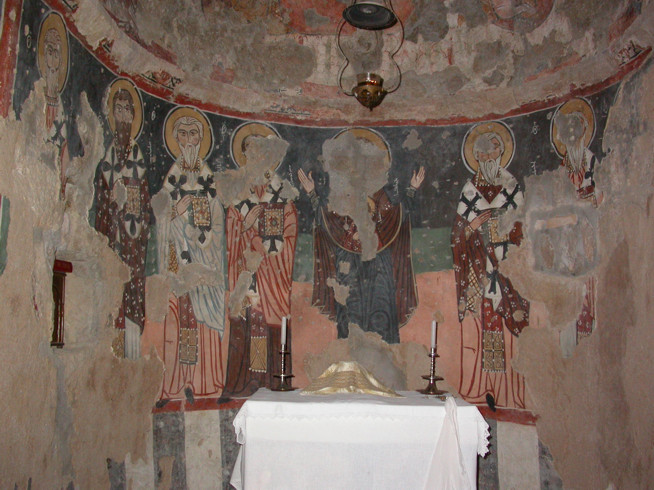
Around the altar is a depiction of the Virgin and Child flanked by the Apostles.
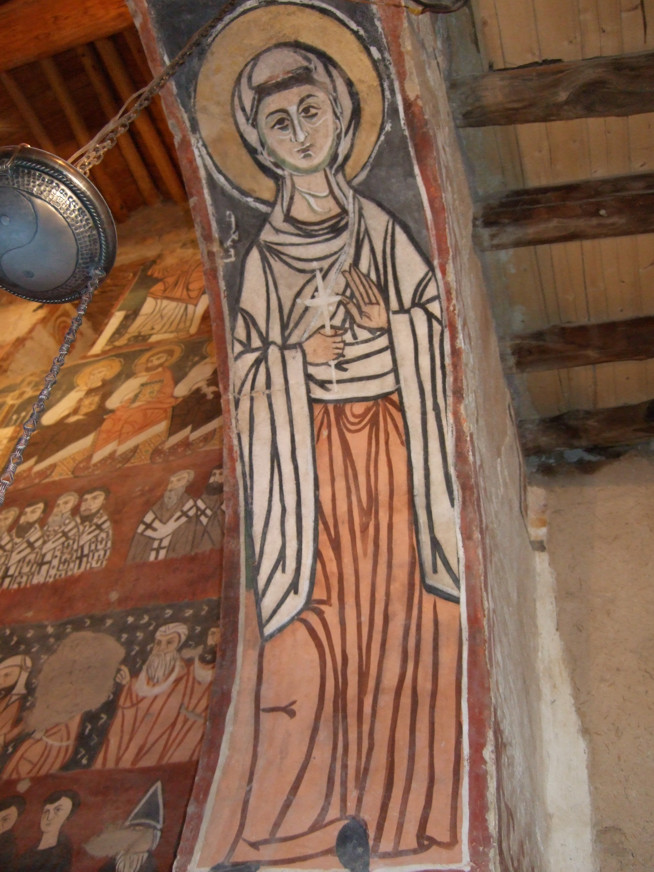
St. Catherine from the 1208 phase.
The last phase of 1208 is thought to particularly be influenced by Jerusalem, then an amalgam of Syrian, Byzantine and European styles. Following the Battle of Hattin in 1188 and Salah al-Din's conquest of Jerusalem there may have been refugees, or there may have simply been greater access to the Holy City for Eastern Christians. This would include the insertion of the Evangelists, painted over the Old Testament motifs, and also the monumental Last Judgement.
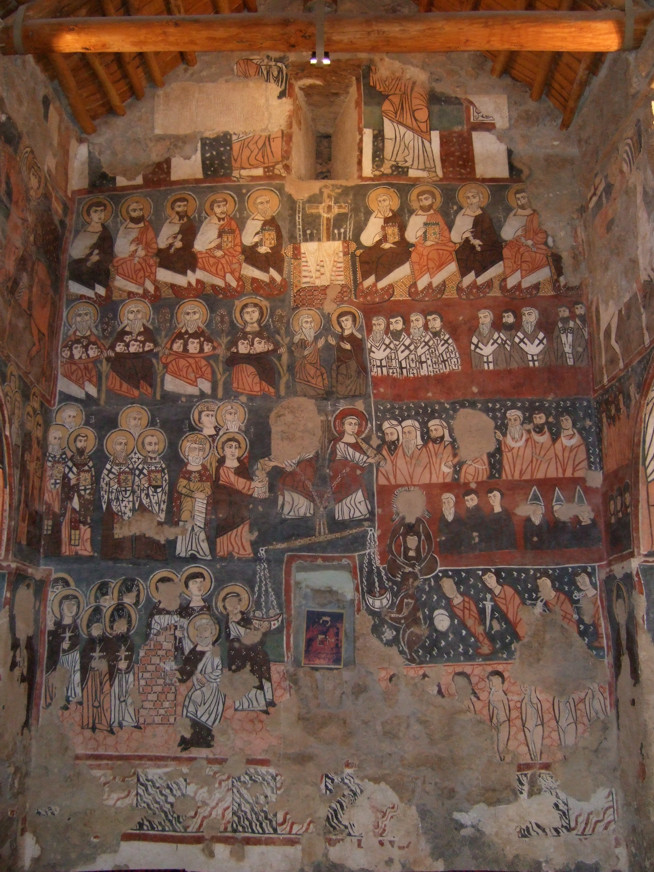
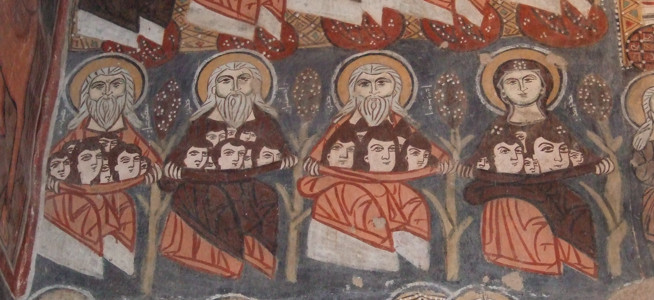
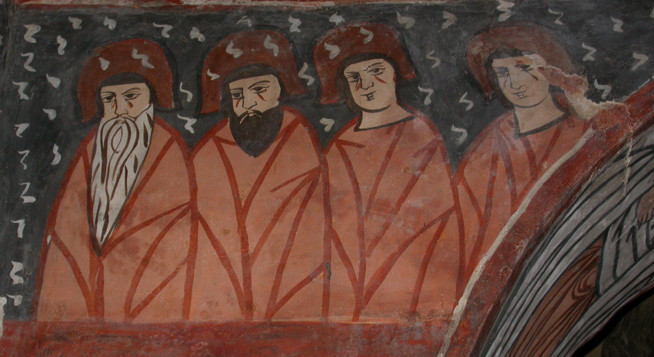
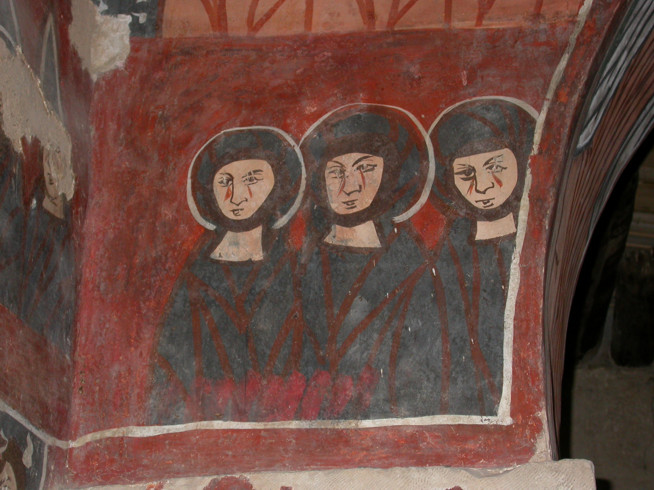
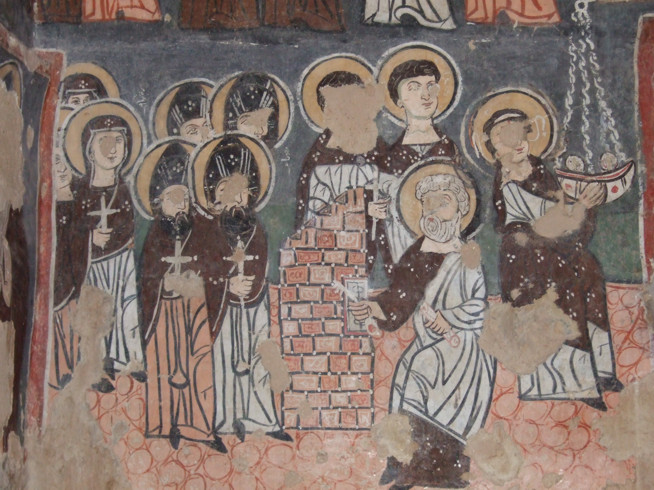
The lowest register of the Last Judgement probably depicts members of the community in 1208, men and women, being ushered into Heaven through the Pearly Gate by St. Peter, carrying the customary key. To the right is an angel, pulling down on the scales by which Sinners are Judged.
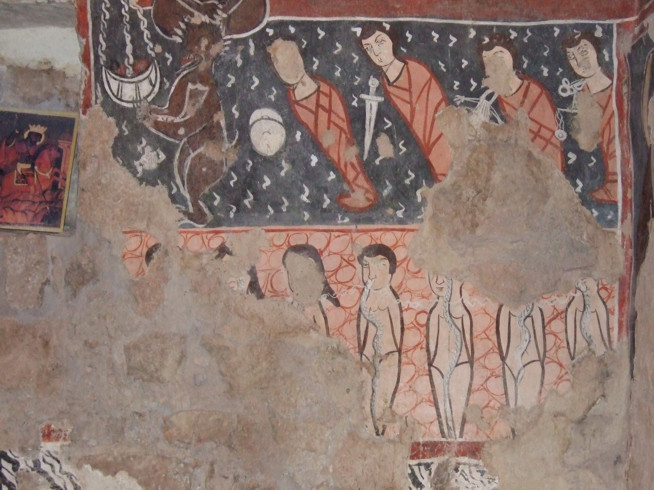
The lowest register on the right side of the Last Judgement are Sinners, the upper register show people condemned by various symbols that reflect the sin they are guilty of, most of which are quite obscure, but the sword is pretty obvious; while the lowest register contain those naked and chained Sinners who are guilty of Sensualism, with snakes entering their bodies through the organs of the senses.
FURTHER READING
Il restauro del monastero di San Mose l’Abisino, Nebek, Siria, by P. Dall’Oglio, M. Cordaro, L. Alberta, et al, 1998, Damascus.
NAVIGATION (links will become hot as they are published)
The Monastery of St. Moses, Syria: Introduction
The Monastery of St. Moses, Syria: The Pottery
The Monastery of St. Moses, Syria: The Frescoes
The Monastery of St. Moses, Syria: The Cave Survey
The Monastery of St. Moses, Syria: The Buildings
The Monastery of St. Moses, Syria: The Prehistoric Remains
The Monastery of St. Moses, Syria: Conclusion and Syria Today
